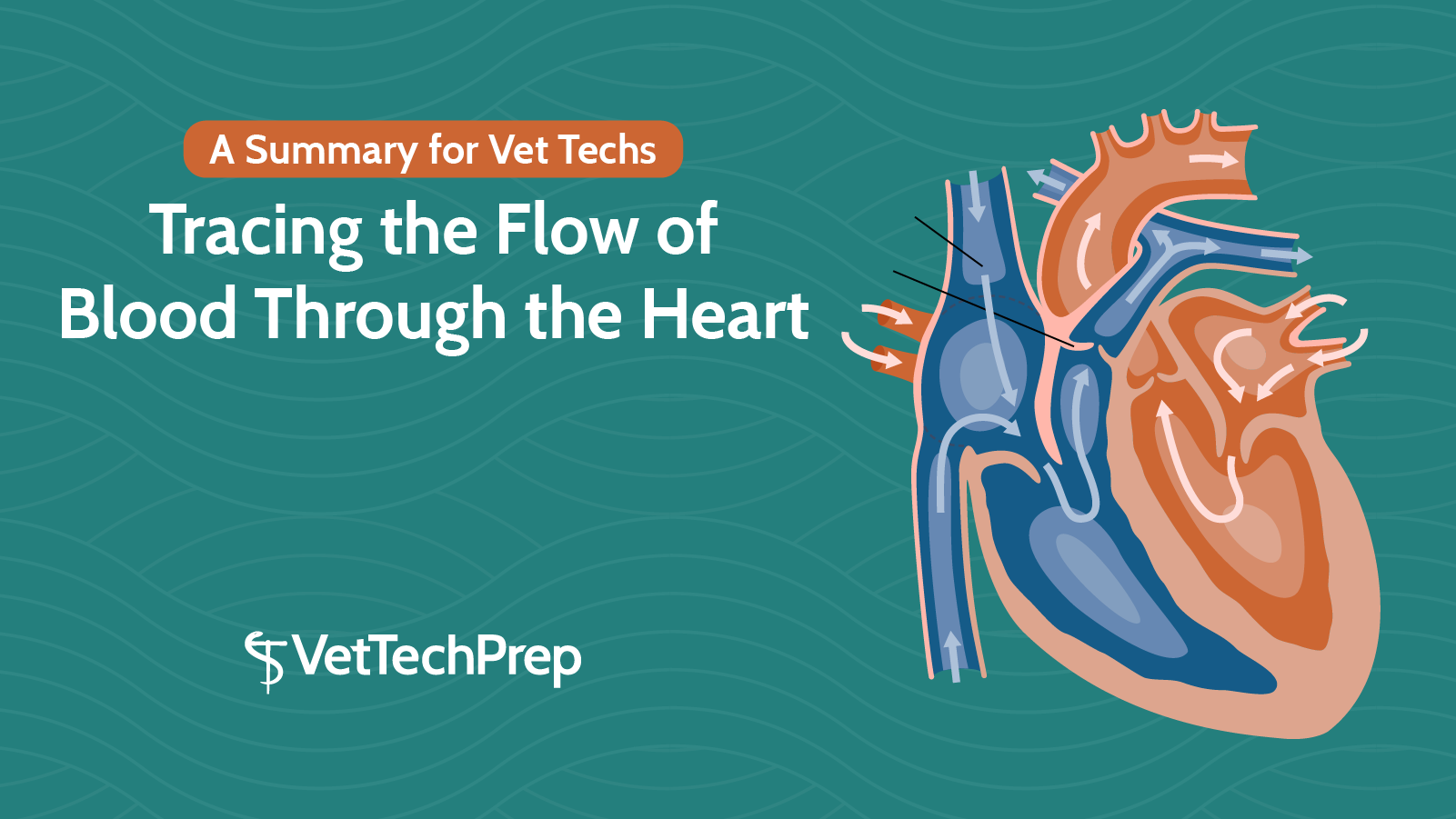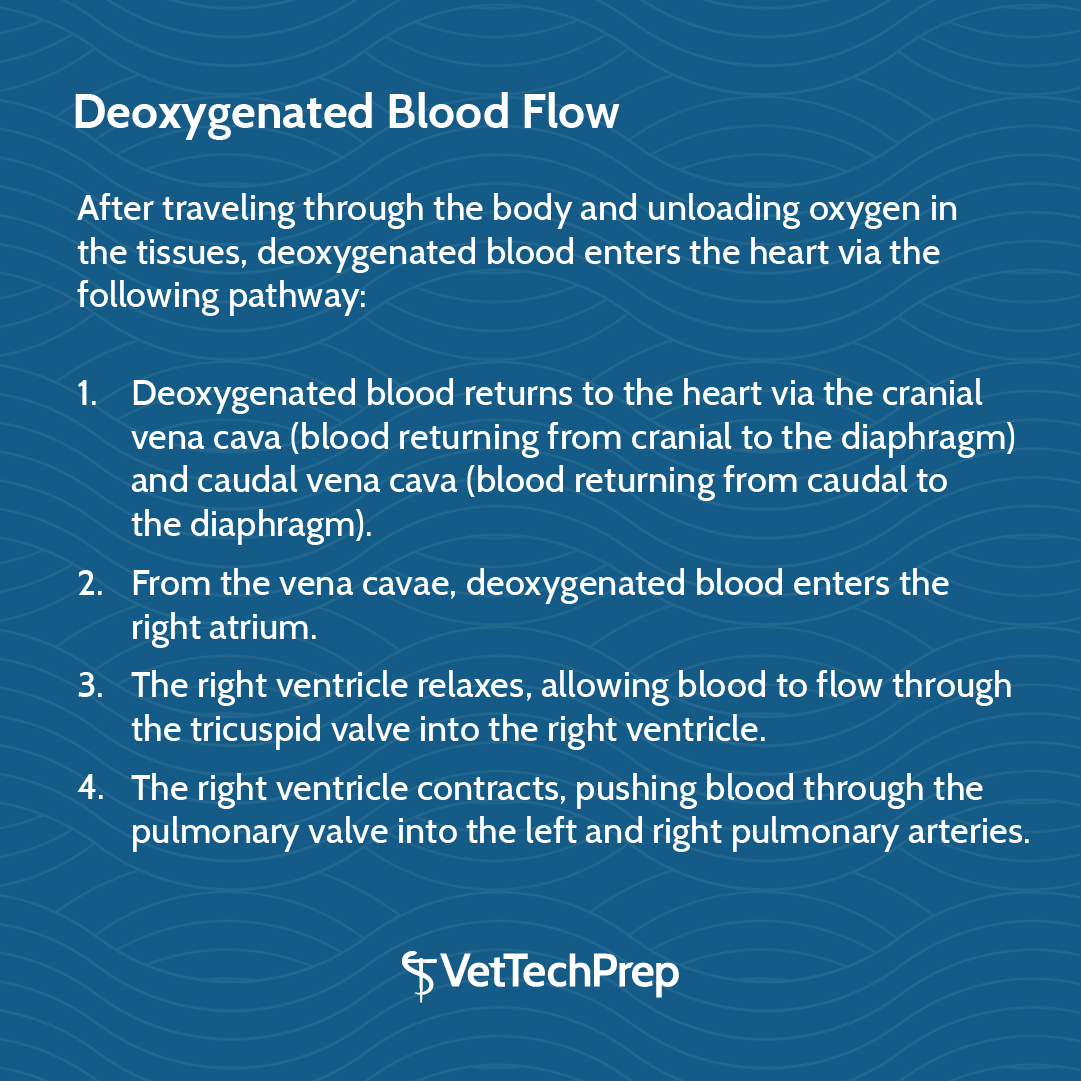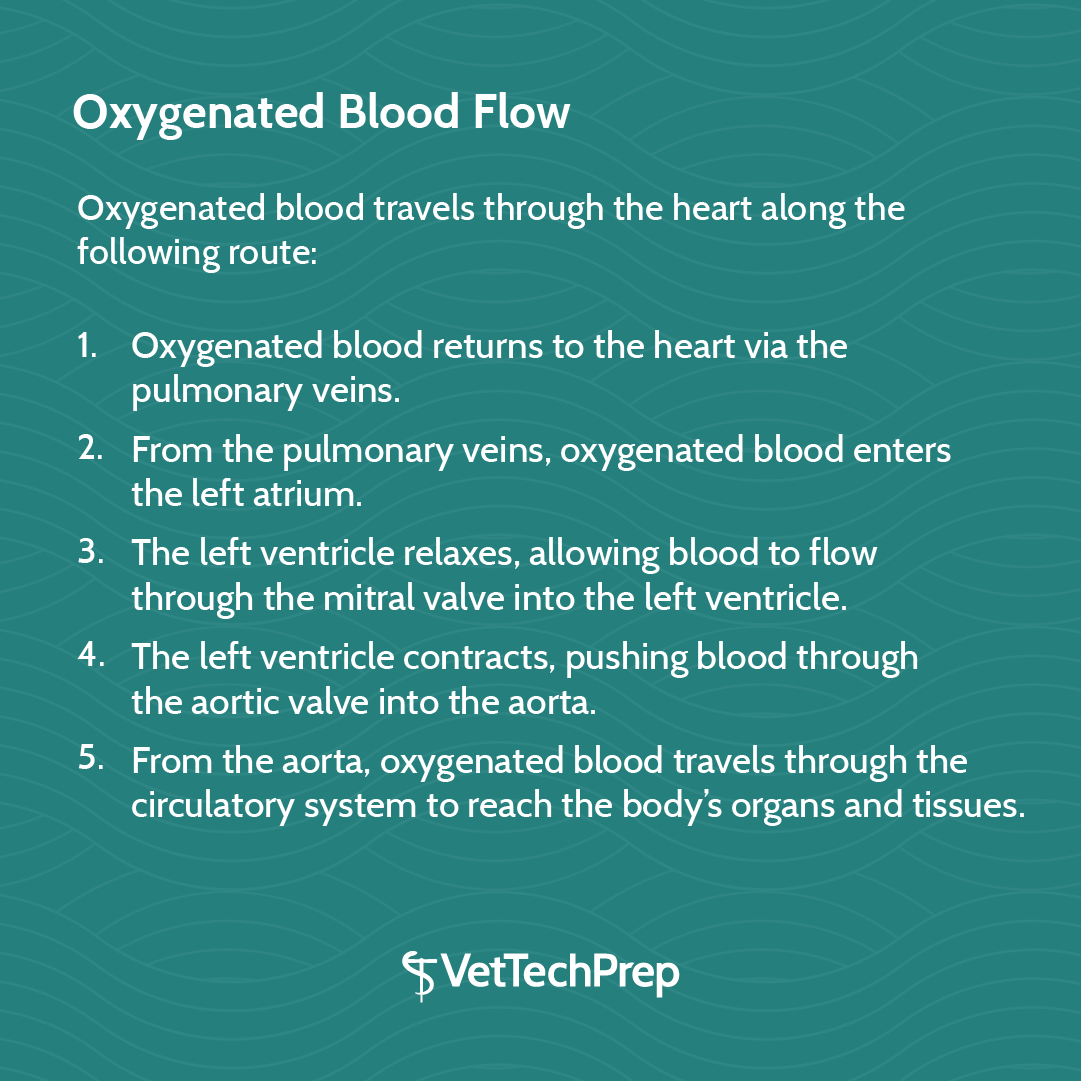They say a picture is worth a thousand words, so here’s a helpful image:

 This particular image is relatively useless at first glance, because it contains a lot of information. If you take the time to actually trace the flow of blood through the heart, however, it can be very helpful!
This particular image is relatively useless at first glance, because it contains a lot of information. If you take the time to actually trace the flow of blood through the heart, however, it can be very helpful!
Deoxygenated Blood Flow
After traveling through the body and unloading oxygen in the tissues, deoxygenated blood enters the heart via the following pathway:
- Deoxygenated blood returns to the heart via the cranial vena cava (blood returning from cranial to the diaphragm) and caudal vena cava (blood returning from caudal to the diaphragm).
- From the vena cavae, deoxygenated blood enters the right atrium.
- The right ventricle relaxes, allowing blood to flow through the tricuspid valve into the right ventricle.
- The right ventricle contracts, pushing blood through the pulmonary valve into the left and right pulmonary arteries.

Pulmonary Blood Flow
From the pulmonary arteries, blood moves into a network of pulmonary capillaries. In these capillaries, carbon dioxide is released from the blood and oxygen is absorbed. Oxygenated blood returns to the heart via the pulmonary veins.
Oxygenated Blood Flow
Oxygenated blood travels through the heart along the following route:
- Oxygenated blood returns to the heart via the pulmonary veins.
- From the pulmonary veins, oxygenated blood enters the left atrium.
- The left ventricle relaxes, allowing blood to flow through the mitral valve into the left ventricle.
- The left ventricle contracts, pushing blood through the aortic valve into the aorta.
- From the aorta, oxygenated blood travels through the circulatory system to reach the body’s organs and tissues.

Summary
Once you have learned this basic blood flow pattern, you will be well-equipped to answer cardiology questions on the VTNE®, as well as in your life as a practicing vet tech.





 This particular image is relatively useless at first glance, because it contains a lot of information. If you take the time to actually trace the flow of blood through the heart, however, it can be very helpful!
This particular image is relatively useless at first glance, because it contains a lot of information. If you take the time to actually trace the flow of blood through the heart, however, it can be very helpful! 
